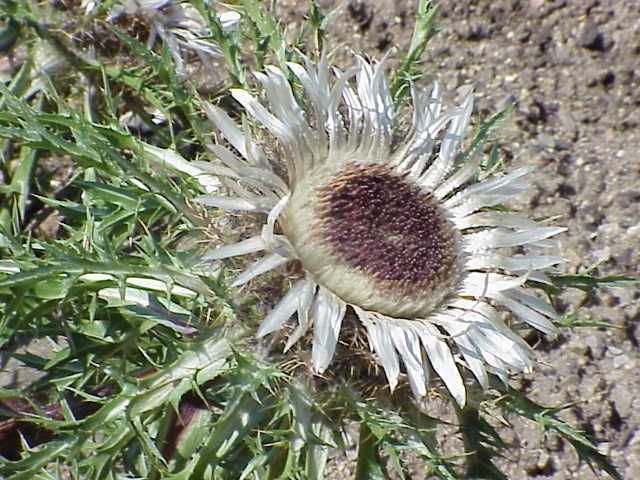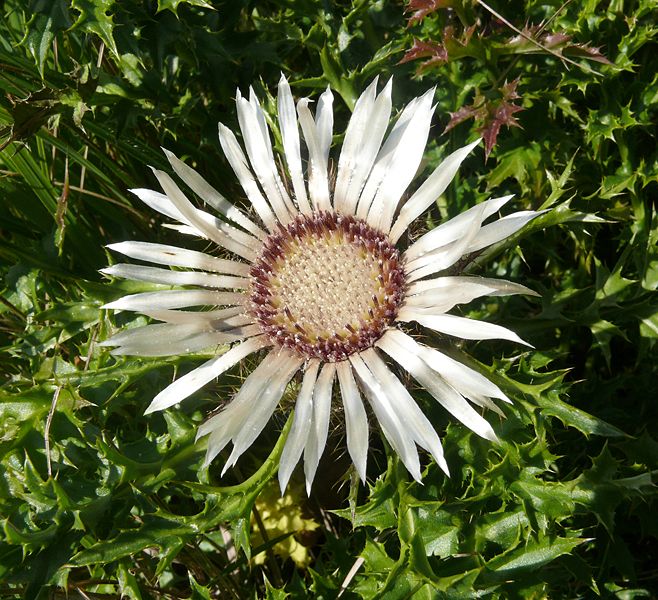Carlina acaulisCarlina acaulis (Stemless carline thistle, Dwarf carline thistle, or Silver thistle) is a perennial dicotyledonous flowering plant in the family Asteraceae, native to alpine regions of central and southern Europe. The common names are descriptive of the manner that its flower head rests directly upon a basal leaf rosette. The spiny, pinnatilobate leaves grow in a basal rosette approximately 20 cm in diameter. The flowers are produced in a large (up to 10 cm) flowerhead of silvery-white ray florets around a central disc. The disc florets are tubular and yellow-brown in colour. The head closes in wet weather, a phenomenon which is held to presage forthcoming rain. The flowering time is between August and September. It prefers chalky soils and dry pastures in environments from valleys up to an altitude of 2,800 m. There are two subspecies:
The rhizome contains a number of essential oils, in particular the antibacterial carlina oxide. The root was formerly employed in herbal medicine as a diuretic and cold remedy. While young, the flowerhead bud can be cooked and eaten in a similar manner to the Globe artichoke, which earned it the nickname of hunter's bread. It is sometimes cultivated as a rockery plant, or dried and hung as a house decoration. References Flora Europaea: Carlina acaulis
From Wikipedia, the free encyclopedia
|
|

